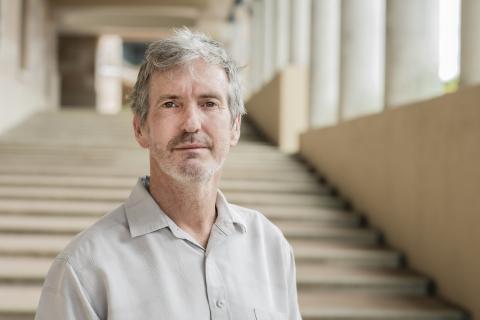by Bruce Watt, Associate Professor of Psychology
Despite some recent welcome rain, this bushfire season is shaping up to be the worst in 70 years.
So, let’s start by torching a well-worn myth about people who recklessly light bushfires.
There is no typical arsonist and as convenient it would be for investigators if these people were cut from the same cloth and shared the same profile, that’s just not the case.
There are plenty of reasons bushfires start in this country, from burn-offs gone wrong to lightning strikes to sparks from power tools to campfires not extinguished properly to electric fences to very young children playing with matches and more.
But according to Australia's National Centre for Research in Bushfire and Arson, 13 percent of bushfires every year are deliberate and 37 percent are suspicious.
People light fires for a myriad of different reasons and it’s important for us to know as a society what is driving each behaviour.
We’re not starting flat-footed with our knowledge on the subject. There’s plenty of research out there, but there is still much to learn.
For instance, we know there are adults and juveniles that are genuinely anti-social and who are also involved in thefts and fights and all sorts of other activities that attract the attention of the police.

To these people lighting fires is simply an extension of their rap-sheet repertoire.
There are those who might steal a car and set it on fire to conceal their actions, often in remote bushland which is already a high fire risk.
Other people may have mental health difficulties, including a poor ability to express what might be distressing them and who set fires to express their frustrations or draw attention to themselves.
And there are the people pre-occupied with the power of fire who often have the mistaken belief that they can control what they can’t.
Setting fires is a way for them to relieve their built-up tensions or anxieties and they’ll invariably feel some sort of satisfaction or relief after they’ve put a match to the landscape.
Then there are those motivated by grievance, to get back at an organisation or an individual, and who are more likely to revengefully target people’s property.
So, it’s important to understand, particularly here in one of the most combustible countries on the planet, that the behaviours of an arsonist are not one size fits all.
At the same time, we have learned that people who light fires regardless of the core motivation know what they are doing as much as they know they shouldn’t be doing it.
Age is another interesting part of the mix.
A point of distinction between juveniles and adults is that juvenile arson is more likely to be encouraged by peers as opposed to adults who tend to act more often alone and of their own volitions.
Reflecting widespread activity of people their age, juveniles are more likely to encourage each other and ignore the risks and that’s something we see more than we’d like.
So again, there is no typical arsonist profile, and from a forensic psychologist’s perspective we are acutely interested in what drives these people so we can better prevent needless life-threatening incidents occurring and recurring.
If a person is genuinely anti-social, we need a comprehensive approach that targets their general pushback against rules and laws and their disregard for other people and property - and parents not knowing where their children are and who they are with is something that needs sorting out in the community.
We have learned a lot in the 20 years I have been studying anti-social behaviour – about the different types of people who light fires and their thinking and the emotions that drive them in the broader context, but a significant gap remains in prevention.
If you look at other forms of anti-social behaviour such as violence towards others, there’s a large evidence base we can draw upon, but we still have a lot of work to do with arson to better understand such a diverse and complex range of people.
And when I say ‘we’ I’m talking about the various professional groups and the youth justice and correctional services and schools and others that have the resources and smarts to help lower the temperature on the problem.
Our knowledge is getting better every day but with the world’s better understanding of the global and local consequences of our planet heating up and bushfires becoming increasingly prevalent by natural, accidental and other means that don’t need the help of arsonists, we still have a big job in front of us.
If you want to hear more from Associate Professor Bruce Watt, head here: https://open.spotify.com/episode/2VKjXmy4TQpaiPSFrRlXcB?si=UYgnwhyHQAO44wpjA3er0A.
Bond University Associate Professor Bruce Watt has studied anti-social behaviour for the past 20 years including investigations into arson-related homicides, high risk psychotic phenomena and juvenile harms to others.